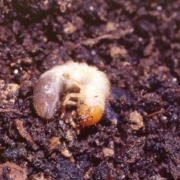British lawns stuck in a harmful chemical cycle
British lawns stuck in a harmful chemical cycle: Could our love affair with the perfect green lawn actually be doing more harm than good? According to leading soil expert Robert Wilkins, that’s exactly what’s happening – and unless we change how we care for our grass, many lawns could be heading for long-term decline.
The problem lies beneath the surface. For decades, gardeners have been encouraged to apply chemical fertilisers and pesticides to keep lawns looking lush and green. But those quick-fix solutions are slowly stripping the soil of its natural life, damaging the delicate ecosystem that keeps grass healthy and resilient.

British lawns stuck in a harmful chemical cycle
“Many people believe they’re helping their lawns by feeding them with fertilisers,” says Wilkins, operations director at soil biology specialists Ruskins. “But in reality, they’re creating a dependency. As soon as the effects wear off, the lawn starts to struggle, so another treatment is applied – and the cycle continues. Over time, the soil becomes lifeless, and the lawn needs more and more help to survive.”
The hidden life beneath your feet
Healthy soil is teeming with life – bacteria, fungi, earthworms, and countless other tiny organisms that recycle nutrients, improve drainage, and protect plants from disease. Together, they form what’s known as the soil food web, nature’s own support system for your garden. When left alone, this network builds strong, deep-rooted lawns that can cope with drought, resist pests and stay green with minimal effort.
The trouble is that synthetic fertilisers bypass these natural processes. They deliver nutrients directly in a concentrated form, giving grass a short burst of growth but leaving the soil’s microbial life with nothing to do. Over time, this life dwindles – and with it, the soil’s ability to sustain plants naturally. Weedkillers and other chemicals add to the damage, reducing biodiversity and weakening the lawn’s natural defences.
The cost of poor lawn care
The country’s gardens cover some 433,000 hectares, based on estimates from the Wildlife Gardens and Landscape Foundation (WLGF) – and roughly a quarter of that is lawn. That’s almost a billion square metres of grass which is being drenched in chemicals that are slowly destroying the lawns they are supposed to nurture.
A lawn treated with chemicals might look perfect for a few weeks, but appearances are deceptive. Without a healthy soil structure underneath, roots grow shallow, making the grass more vulnerable to drought and disease. Hard, compacted soil stops water draining properly, moss and weeds take over, and the lawn becomes trapped in a cycle of chemical treatments just to survive.
It’s not just your garden that suffers. Excess fertiliser can wash into rivers and streams, polluting waterways and harming wildlife. Pesticides can have a similar effect, disrupting aquatic ecosystems far from where they were applied.
A better way to a beautiful lawn
The good news? Breaking the cycle is easier than you might think. A lawn with a healthy, living soil needs far less chemical intervention – often none at all. Nature has already perfected the system: soil organisms work with grass roots to supply nutrients, improve aeration and drainage, and build resilience. All you need to do is support that system.
Here are some simple ways to start:
- Feed the soil, not just the grass.Use organic matter such as compost or lawn clippings to nourish the soil naturally.
- Let nature do the work.Mow regularly but leave the cuttings to decompose – they’ll return valuable nutrients to the soil.
- Avoid unnecessary chemicals.Only use treatments when absolutely necessary, and choose natural alternatives where possible.
- Aerate and care for the soil.Occasional aeration and light top-dressing with compost can revitalise tired lawns.
As climate change brings longer dry spells and heavier rainfall, lawns built on living soil will cope far better with the extremes. They’ll act like natural sponges – soaking up rainwater when it’s wet and holding onto moisture when it’s dry.
“Gardeners now have a clear choice,” says Wilkins. “They can keep relying on quick fixes and watch their soil deteriorate, or they can work with nature and build a lawn that’s stronger, healthier and far more sustainable. It might take a little longer to see results, but the reward is a lawn that thrives year after year.”
For the latest industry news visit landscapingmatters.co.uk/news
Get all of the big headlines, pictures, opinions and videos on stories that matter to you.
Follow us on Twitter and Instagram for fun, fresh and engaging content.
You can also find us on Facebook for more of your must-see news, features, videos and pictures from Landscaping Matters












